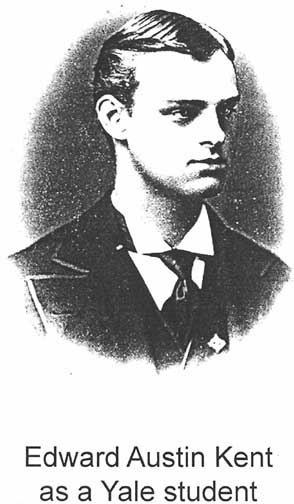Name Edward Kent Died April 15, 1912 | ||
 | ||
Similar People Samuel Wilkeson, George W Clinton, Philip Becker | ||
Architect Edward Kent helped many flee
Edward Austin Kent (February 19, 1854 – April 15, 1912) was a prominent architect in Buffalo, New York. Kent died on April 15, 1912 when the RMS Titanic sank and was seen helping women and children into the lifeboats.
Contents

Biography
Edward Austin Kent was born in Bangor, Maine on February 19, 1854 to Harriet Ann Farnham (1830–1908) and Henry Mellen Kent (1823–1894). Kent moved with his family to Buffalo after the American Civil War, where his father, Henry, opened a successful department store, Flint & Kent. He was the brother of William Winthrop Kent (1860–1955), also a prominent architect who studied under H. H. Richardson, and Charles Farnham Kent (1856–1878), who died aged 22 in Denver, Colorado. Kent attended and graduated from Yale, in 1875, and later the École des Beaux-Arts, the famous Beaux-Arts architecture school in Paris. Returning to the U.S. in 1877, he became junior partner in the Syracuse, New York firm of Silsbee and Kent. In 1884, he returned to Buffalo and remained there for the rest of his career, helping to found the Buffalo Society of Architects and receiving many prominent commissions, including Flint & Kent. Until his death, he lived at the Buffalo Club.
In 1912, he took a two-month vacation to France and Egypt and planned on retiring after returning home. He decided to delay his trip home so he could travel on the maiden voyage of the new and luxurious ocean liner, the RMS Titanic.
Aboard the Titanic
Kent traveled as a first-class passenger. He mingled with the other socialites, including Helen Churchill Candee and Archibald Gracie. He also met on occasion with a writers group. He perished when the ship struck an iceberg and sank on the night of April 14–15, 1912. As the ship was sinking, he disregarded his own safety to help women and children into the lifeboats. He was last seen at around 2:20 a.m. making no attempts to save himself as he was swept into the ocean. His body was recovered by the CS Mackay-Bennett as body No. 258 and claimed by his brother when the ship docked. He was laid to rest in the Forest Lawn Cemetery in Buffalo, New York.
